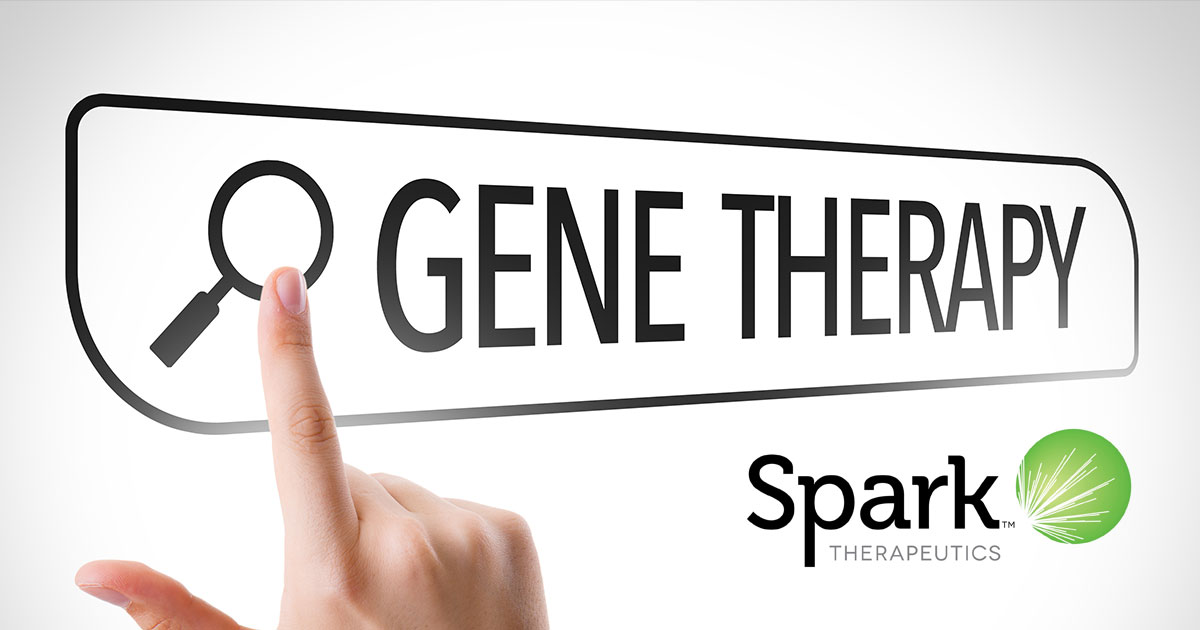Double Shot Gives Spark Therapeutics a Jolt

Spark Therapeutics is riding a double shot of positive news about its gene therapy treatment for RPE65-mediated inherited retinal disorders that’s given its stock a boost, pushing it near an all-time high.
The first shot came when The Lancet published Phase III clinical trial data of voretigene neparvovec, the investigational, potential one-time gene therapy candidate for treatment of vision loss due to confirmed biallelic RPE65-mediated inherited retinal disease.1 In the trial, investigational voretigene neparvovec, which has the proposed trade name Luxturna, improved functional vision, light sensitivity, and visual field in study participants with RPE65-mediated inherited retinal disease. A natural history study has shown that people with this condition eventually progress to complete blindness.
The second shot came a few days later when the Food and Drug Administration notified Spark that its Biologics License Application for voretigene neparvovec had been granted priority review status, which means a six-month review period under the Prescription Drug User Fee Act (PDUFA). That results in the FDA’s review being due by January 12, 2018 – and Spark is on track to have the first FDA-approved gene therapy for a genetic disease. That’s on schedule with a time line that Spark CEO and co-founder Jeffrey D. Marrazzo laid out at last year’s OIS@AAO in Chicago, when he said the goal was to file the BLA for the RPE65-mediated therapy in 2017.
Spark already has orphan designations for its RPE65 program in the US and European Union and breakthrough therapy designation in the US.
‘Functional Vision’ Key Endpoint
A dialog with the FDA early in the process is valuable in determining trial endpoints when seeking indications for rare diseases, Marrazzo said at OIS@AAO 2016. “You have to see and generate the natural history data,” he said. For voretigene neparvovec, that meant the FDA wanted data on how the treatment impacted patients’ lives. “The FDA was keen on this concept of functional vision,” Marrazzo said. Measurable endpoints, like visual field and visual acuity, can also be meaningful. “All those things end up being critical and composite to any rare disease where you’re trying to break new ground,” he said.
The Lancet article reported a statistically significant and clinically meaningful difference between intervention (n = 21) and control participants (n = 10) per the primary endpoint of mean bilateral multi-luminance mobility testing (MLMT) change score (difference of 1.6; 95% CI, 0.72, 2.41; p = 0.0013). Participants maintained functional gains observed 30 days post-administration at the one-year primary endpoint. MLMT evaluates functional vision by documenting participants’ ability to navigate a mobility course under a variety of specified light levels ranging from 1 lux (equivalent to a moonless summer night) to 400 lux (equivalent to an office environment).
Improvements seen in MLMT were accompanied by statistically significant improvements in two secondary endpoints, including full-field light sensitivity threshold testing averaged over both eyes (p = 0.0004). A third secondary endpoint, the change in visual acuity averaged over both eyes, was not statistically significant between intervention and control participants (p = 0.17).
An additional protocol-specified endpoint using the Goldmann III4e test stimulus to measure the visual field area of the original intervention group showed significant improvement (p = 0.0059), nearly doubling at year one, while a slight decrease was observed in the control group over the same time period.
The trial reported no serious adverse events (SAEs) associated with voretigene neparvovec or deleterious immune responses. Most adverse ocular events were mild; the most common were transient mild ocular inflammation, transient elevated intraocular pressure, cataracts and intraoperative retinal tears. Two participants in the intervention group, one with a pre-existing complex seizure disorder and another who experienced complications from oral surgery, had SAEs unrelated to study participation.
Stock Approaches Record Price
Since the double shot of encouraging news, Spark’s stock price has crept upward to around $70 a share at this week’s opening, topping for a time the previous all-time high of $73.64 in June 2015. Spark floated its IPO at $23 a share in January 2015.
Spark’s ophthalmology pipeline also includes SPK-7001 in a Phase I/II trial for choroideremia. Spark also has two hemophilia development programs: SPK-9001 (which also has received both breakthrough therapy and orphan product designations from the FDA, and access to the PRIority MEdicines [PRIME] Program by the European Medicines Agency) in a Phase I/II trial for hemophilia B being developed in collaboration with Pfizer; and SPK-8011, in a Phase I/II trial for hemophilia A to which Spark Therapeutics retains global commercialization rights.
REFERENCE
1. Russell S, Bennett J, Wellman JA, et al. Efficacy and safety of voretigene neparvovec (AAV2-hRPE65v2) in patients with RPE65-mediated inherited retinal dystrophy: a randomised, controlled, open-label, phase 3 trial. Lancet. 2017 Jul 13. pii: S0140-6736(17)31868-8. doi:10.1016/S0140-6736(17)31868-8. [Epub ahead of print]

